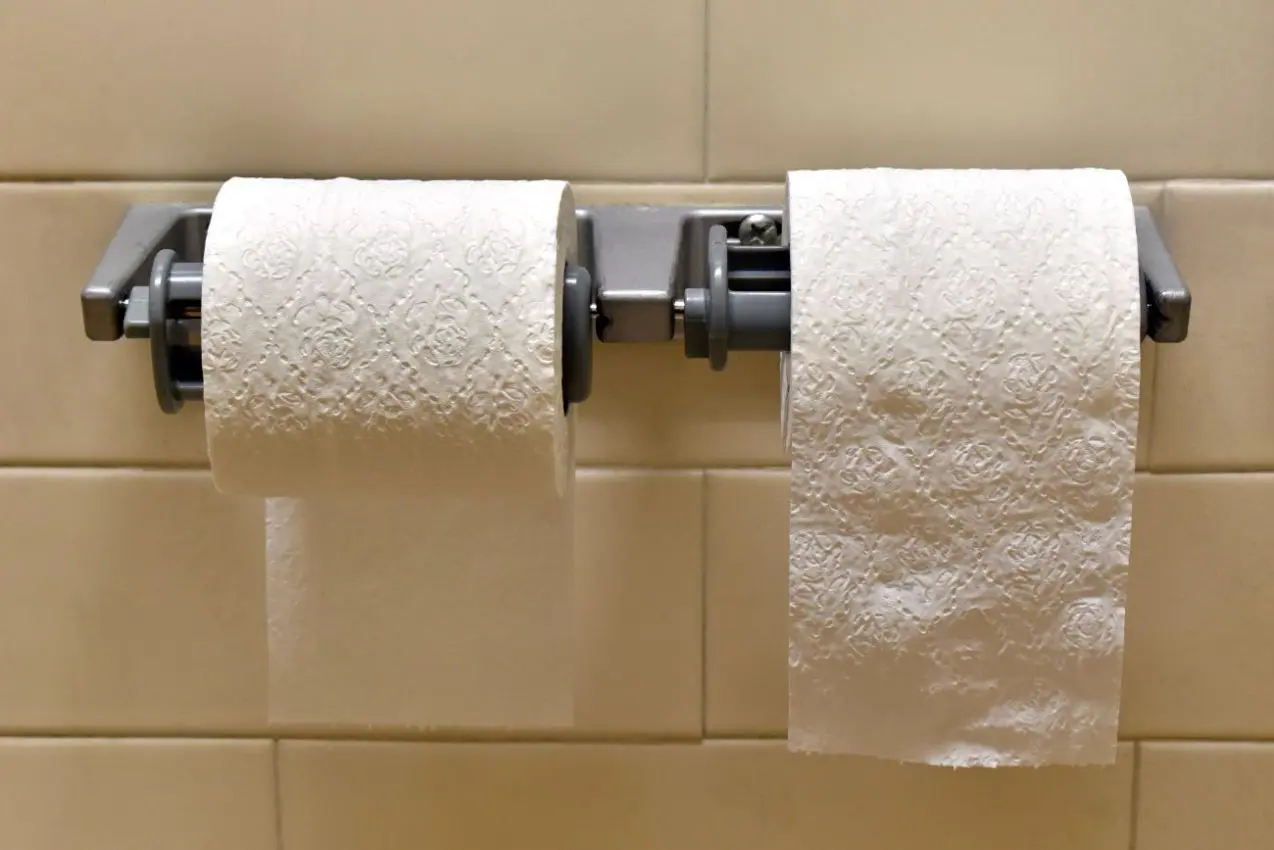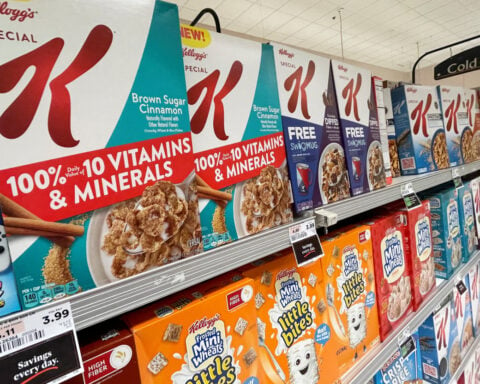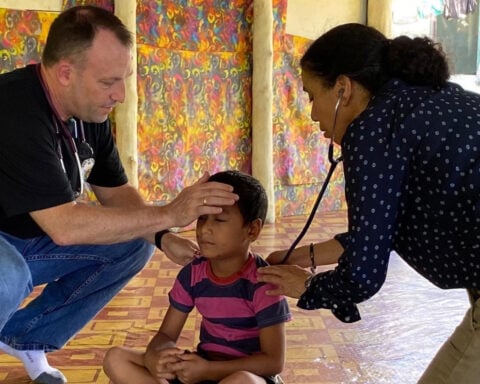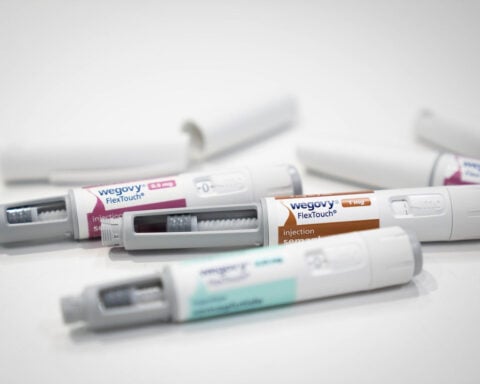Using public restrooms is an everyday necessity for most people. However, a recent viral TikTok video has raised alarming concerns about the potential health risks hidden in plain sight in these public spaces.
The now infamous video by user Dane Jones displays an image of a toilet paper roll covered in small red flecks and thin streaks. Jones claims these stains come from intravenous drug users cleaning their needles on the toilet paper, leaving behind traces of contaminated blood. With over 7 million views, the graphic advisory has left many viewers fearful of using public restrooms. But how credible are these viral warnings?
While the threat may be overstated, health experts say there are legitimate risks to consider when using facilities like public bathrooms, especially amidst the ongoing opioid crisis. Caution and awareness can go a long way in protecting yourself in these semi-private spaces.
The United States is in the midst of a devastating opioid epidemic. According to the CDC, there were over 100,000 drug overdose deaths nationwide in 2021, with around 80,000 involving opioids specifically. Synthetic opioids like fentanyl are claiming more and more lives, but heroin addiction remains an immense issue across the country.
With this crisis comes increased public drug use in cities. In New York, where heroin and fentanyl overdoses reached record levels in 2021, injection drug use is more prominent on streets and in transit stations. Addicts experiencing withdrawal and desperation for their next dose are conducting risky behavior in full view of the public.
This has led to more stories of drug paraphernalia and bloody tampons being found in areas like public bathroom stalls. While these reports create sensations, experts say attacks specifically targeting toilet paper are less common than some viral warnings suggest. Still, with opioid use touching all facets of society, risks exist in even clean, well-maintained restrooms. Caution is advised.
Assessing the Health Risks
Should drug residue in bathrooms be cause for alarm? According to experts, while contact with blood-borne pathogens is possible in restrooms, the actual risk is quite low. Here are some key factors to consider:
- Surface Contact - Traces of contaminated blood or bodily fluids usually cannot transfer infections without direct contact or a conduit into the bloodstream. Simply touching a surface like a door handle or toilet seat is quite safe.
- Hepatitis - Of the viral infections, hepatitis C is most easily transmitted via dried blood residue. But infection still requires the virus particles to enter the blood, which is unlikely from surface contact alone.
- HIV - HIV cannot survive long outside the body and requires direct bloodstream contact typically. Surface traces do not present a realistic risk.
- Oversight - Most public restrooms are cleaned and disinfected regularly. Bloody residue or drug paraphernalia left on surfaces is fleeting before cleaners address it.
While the chances of infection are very low from restroom contact alone, risks do exist. Washing hands thoroughly after bathroom use can provide protection. Using seat covers, avoiding bare skin contact with surfaces, and choosing stall over urinal use can also minimize risk. If drug paraphernalia or bloody residue is identified, notifying staff immediately allows for swift disinfection.
As injection drug use rises, communities bear a responsibility to address public health impacts. Rather than stigmatize addicts, efforts should focus on rehabilitation assistance and harm reduction strategies.
Some initiatives that can help include:
- Expanded Treatment Access - Greater access to affordable rehab programs, counseling, and medications like methadone and buprenorphine to treat addiction.
- Safe Injection Sites - Providing hygienic locations for supervised drug use reduces public injection. Over 100 legal sites operate in Europe.
- Community Cleanup - Organizing community cleanups to properly dispose of syringes and drug litter in public areas.
- Accessible Disposal - Installing secure disposal boxes and implementing needle exchange programs to safely collect used syringes.
A key priority must also be destigmatizing addiction and treating it as the medical disorder it is. With empathy and proactive policy, communities can aid those suffering from substance abuse rather than ostracizing them, while also addressing public health impacts.
Viral warnings like Dane Jones' TikTok can raise awareness on issues like public drug use. But experts agree there is no reason to avoid public restrooms altogether. The risks of surface contamination remain minimal with proper hand hygiene.
While shocking images get clicks, they often exaggerate dangers and promote misinformation. Always consult health experts to accurately weigh risks like those in public spaces. Stay alert, not anxious. With proper precautions, we can comfortably and safely use the public facilities encountered in daily life.
The opioid crisis will not be resolved easily. But each community has power to enact change through progressive policy and compassion. In the meantime, public awareness and safety is key. Hand hygiene, surface avoidance and prompt reporting of hazards allows us to coexist responsibly withall members of our communities, while protecting public health.

 Trump has begun another trade war. Here's a timeline of how we got here
Trump has begun another trade war. Here's a timeline of how we got here
 Canada's leader laments lost friendship with US in town that sheltered stranded Americans after 9/11
Canada's leader laments lost friendship with US in town that sheltered stranded Americans after 9/11
 Chinese EV giant BYD's fourth-quarter profit leaps 73%
Chinese EV giant BYD's fourth-quarter profit leaps 73%
 You're an American in another land? Prepare to talk about the why and how of Trump 2.0
You're an American in another land? Prepare to talk about the why and how of Trump 2.0
 Chalk talk: Star power, top teams and No. 5 seeds headline the women's March Madness Sweet 16
Chalk talk: Star power, top teams and No. 5 seeds headline the women's March Madness Sweet 16
 Purdue returns to Sweet 16 with 76-62 win over McNeese in March Madness
Purdue returns to Sweet 16 with 76-62 win over McNeese in March Madness








